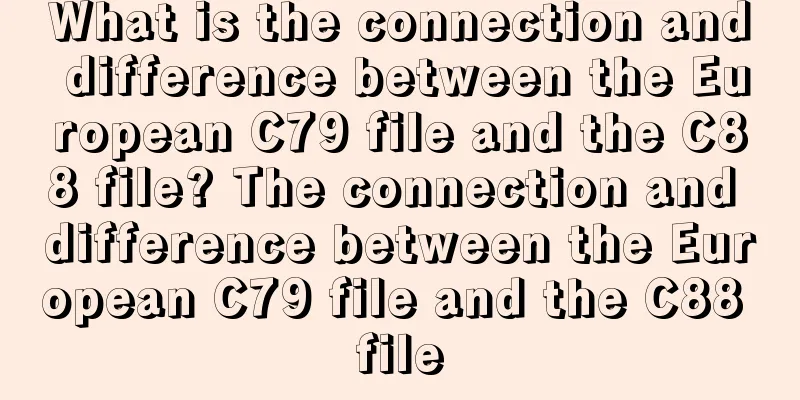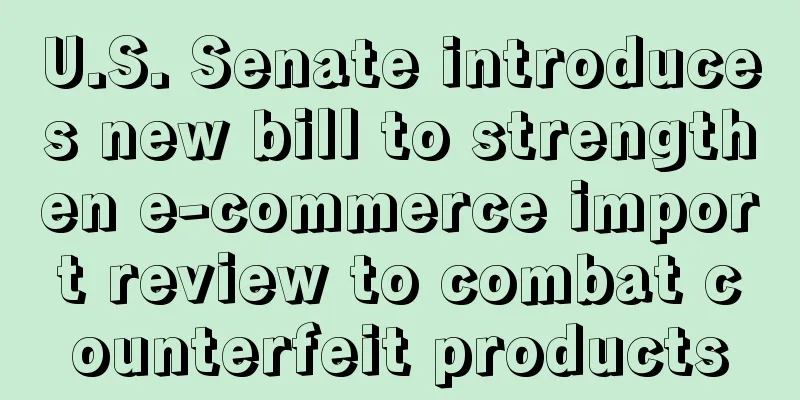Behind the bustling city, a large number of empty-nest young people are hiding in the hustle and bustle. They are like hamsters running non-stop on a wheel, and loneliness and lack of security are a normal part of their lives.
However, the deeper they fall into the dead cycle of boring life, the more they desire the richness of the emotional world. Rather than regaining the mediocre social relationships, these empty-nesters, or more and more young people today, are keen to build a spiritual nest with their pets. People regard pets as equal family members and are willing to invest money in them. From basic food, clothing, housing and transportation to the derivative tracks of birth, aging, illness and death, the pet industry is giving birth to a thriving consumer market, attracting many capital supporters to flock in. From "OEM Robot" to Top BrandCapital always has a keen sense of smell. Pets, the "four-legged money-eating beast" of the new era, are supporting more and more IPOs . After leading companies such as Yuanfei and Tianyuan entered the capital market, Guaibao Pet's listing journey was also finalized. On August 16, Guaibao Pets was listed on the Shenzhen Stock Exchange's Growth Enterprise Market. According to reports, its market value once exceeded 30 billion yuan, and China's largest pet listed company was born. If you are a senior pet owner, you must be familiar with the brand of Mai Fu Di. In 2021~2022, Mai Fu Di won the Tmall TOP Brand Power List (Pet) and won the first place in the Tmall sales list of MAT12021 dog and cat food brands. In addition to being the Taobao sales champion, Mai Fu Di also frequently appeared in many popular variety shows and film and television dramas, and can be called a traffic star in the pet food industry. However, it is not just the domestic market that Myfoodie has conquered that supports Guaibao Pet's IPO. Its growth code can be broken down into three stages. When talking about the development story of Guaibao Pet, it is inevitable to trace back to the entrepreneurial experience of its founder Qin Hua: from a middle school physics teacher, to a section chief of a township enterprise, and then to a senior executive of Fengxiang Group and deputy mayor of Anle Town, Qin Hua at that time was already a winner in life.
However, an accidental discovery during a trip to the United States directly prompted his determination to start a business - the American pet market holds huge business opportunities, and Shandong happens to be a major broiler production province. For this reason, Qin Hua chose to enter the pet food industry, using the domestic cheap supply chain advantage to process pet food for overseas brands. Guaibao Pet was officially established in 2006. Initially, Guaibao Pet was positioned as an export OEM/ODM supplier of pet food for many international brands. During the six years from 2006 to 2012, Guaibao Pet established long-term and stable cooperative relationships with overseas retailers such as Walmart, Smucker's, and Pinpu, and its products were sold to many overseas regions including North America, Europe, Japan, South Korea, etc. During this period, the fledgling Guaibao Pet chose to take the shortcut of OEM, relying on abundant upstream raw materials to act as a ruthless production robot, enjoying cost advantages and not being constrained by inventory pressure. However, as the scale continued to expand, Guaibao Pet began to realize that relying heavily on OEM business was not a long-term solution. The first shot of brand independence In 2013, due to the antibiotic residue incident, large supermarkets in the United States reduced the import of chicken pet snacks from China. With the upgrading of inspection standards, the increase in procurement costs caused Guaibao Pet's profits to shrink further. But this was just the fuse.
Guaibao Pet, which has been manufacturing for international brands for six years, has become increasingly aware that the OEM business lacks pricing power. If it wants to further expand its profit margins, it must strengthen its product premium capabilities. Therefore, Guaibao Pet chose to break free from the constraints of OEM and fired the first shot of brand independence in 2013 - it created its own brand, Mai Fu Di, and transformed to focus on the mid-to-high-end market. The effect of the brand transformation has also been reflected in the actual gross profit of Guaibao Pet. The prospectus shows that from 2019 to 2021, the gross profit margin of Guaibao Pet's own brand increased from 36.14% to 40.82%, while the gross profit margin of OEM/ODM business generally remained in the range of 20% to 25%. In contrast, the profit margin of the own brand business is more than 10%. Expanding overseas business boundaries After successfully incubating and gaining brand recognition in the domestic market, Guaibao Pets began to expand its overseas business. In 2021, it acquired Waggin'Train, a high-end American dog pet food brand under Nestlé Purina, and became the agent of K9 Natural and Feline Natural in the same year, gradually establishing its brand strategy in the international market.
The acquisition of overseas brands has greatly accelerated its entry into the pet food market of overseas third-party platforms. Today, Waggin'Train's sales performance on e-commerce platforms such as Amazon and Walmart is very impressive. Currently, Waggin'Train's own-brand business accounts for a limited proportion, but it has great growth potential. From 2021 to 2022, its sales soared from less than 100 million yuan to nearly 300 million yuan, and its sales ratio also increased from 7.44% to 14.65%. ▲ The picture comes from the prospectus of Guaibao Pet After nearly a decade of development, Guaibao Pet's own brand business has now surpassed OEM/ODM to become the main sales force. During the reporting period, sales revenue accounted for 49.55%, 51.95% and 60.55%, with an annual compound growth rate of 43.53%. We can break down the development of Guaibao Pets into three periods: - Start-up period: Relying on the upstream supply chain advantages, entering the overseas OEM/ODM business.
- Transition period: Get rid of the single-generation processing model and develop own brands. The dual-wheel drive model of overseas processing + domestic own brands has taken shape.
- High-speed development period: Expand the boundaries of domestic and overseas brand matrices and move from the mid-to-high-end market to the high-end market.
“Marketing expert” in the pet industry? Thanks to the rapid development of its own brands, Guaibao Pets has entered the fast lane of development in recent years, with performance showing a sustained growth trend. From 2020 to 2022, its operating income will be 2.005 billion yuan, 2.560 billion yuan and 3.379 billion yuan respectively.
But behind the annual revenue of 3.4 billion, Guaibao Pet is not sitting back and relaxing. The continuous increase in the private label business has certainly increased the gross profit margin of Guaibao Pet, but compared with the high growth in revenue, its net profit performance is quite inferior. During the reporting period, Guaibao Pet's net profit margin was 5.54%, 5.51%, and 7.82%, respectively. Compared with its peers, both 2020 and 2021 were lower than the average. In fact, the rapid rise of Guaibao Pet's brand business is inseparable from its pan-entertainment multi-dimensional marketing initiatives. Specifically, it increases the exposure of its own brands in China through signing spokespersons, variety show/film and television placement, and content promotion. This also involves a core problem that Guaibao Pet is currently facing - more marketing and less R&D. In the past three years, its sales expenses were 341 million yuan, 459 million yuan, and 700 million yuan, accounting for 16.93%, 17.84%, and 20.61% of its revenue in each period. In 2022 alone, the sales expenses of Guaibao Pet increased by 52.46%, which is equivalent to ten times the research and development in the same period, and is nearly three times the sales cost expenditure of other competitors in the market. ▲ The picture comes from the prospectus of Guaibao Pet Guaibao Pets has rapidly increased its brand awareness through a pan-entertainment marketing strategy, but at the same time, it has inevitably been caught up in the controversy of being a "marketing expert". The increasing sales costs have dragged down operating profits to a certain extent. On the other hand, in an industry like pets, which is dominated by foreign capital and lacks domestic brands, the technological innovation capabilities of manufacturers have been increasingly challenged. From the overall operation model of Guaibao Pet, it implements the strategy of running its own brand + OEM business in parallel, and making great strides forward by relying on domestic and overseas business. However, both legs have hidden problems. Although Guaibao Pet has currently formed a mature brand matrix dominated by Myfoodie, in the context of increasingly fierce market competition, Guaibao Pet, which has been over-focusing on marketing, has not yet formed a solid competitive barrier. Looking at its overseas positions, the brand matrix has not yet taken shape and is still highly dependent on the OEM/ODM model. With the advancement of global economic integration and the deep integration of industrial layout, more and more emerging economies are standing out by relying on the advantage of lower labor costs. Therefore, pet food processing, a labor-intensive industry with serious product homogeneity, may be banned at any time. Domestic brands sound the clarion call for a counterattack From a global perspective, relevant data show that the current global pet market size is approximately US$261 billion and is expected to climb to US$350 billion in 2027. The huge market growth potential and strong anti-cyclical properties have also made the pet economy continue to revitalize.
With the high growth of the industry, more and more pet companies are rising and going public. From China Pet, Pet, Yiyi, to Luce, Yuanfei and Tianyuan, Guaibao Pet has also entered the capital arena. They each target different niches, some focus on pet food, and some focus on pet supplies. But the same thing is that most of these companies started out by manufacturing for international pet brands. From the 1990s to the present, the domestic pet market has only developed for more than 30 years and is still relatively backward compared with developed overseas markets: according to iResearch Consulting data, the penetration rate of China's pet market in 2021 was only 17%, while that of the United States was as high as 70%. Although China lacks the soil for the development of pet brands, it has abundant upstream raw material advantages. For this reason, domestic pet companies generally played the role of OEM factories for overseas brands in the early days. This has also led to overseas brands occupying an absolute leading position for a long time, both in the domestic market and abroad. But nowadays, this pattern is gradually being shaken. In order to pursue long-term development drivers, pet companies are no longer willing to be vassals of international brands, and are flocking to brand independence and product autonomy. Relying on the experience in product research and development, production technology, quality control, etc. accumulated from long-term OEM business, pet companies are the first to establish the prototype of their brand in China. After laying the foundation for domestic business, they will take advantage of the opportunity to push the brand to the international stage, thus forming a dual circulation model of mutual complementarity and benefit at home and abroad. From the development path of companies such as Guaibao Pets, we can see that branding and globalization will always be the proposition for the pet industry to keep pace with the times. It is foreseeable that Chinese pet brands are constantly narrowing the gap with international brands.
|










